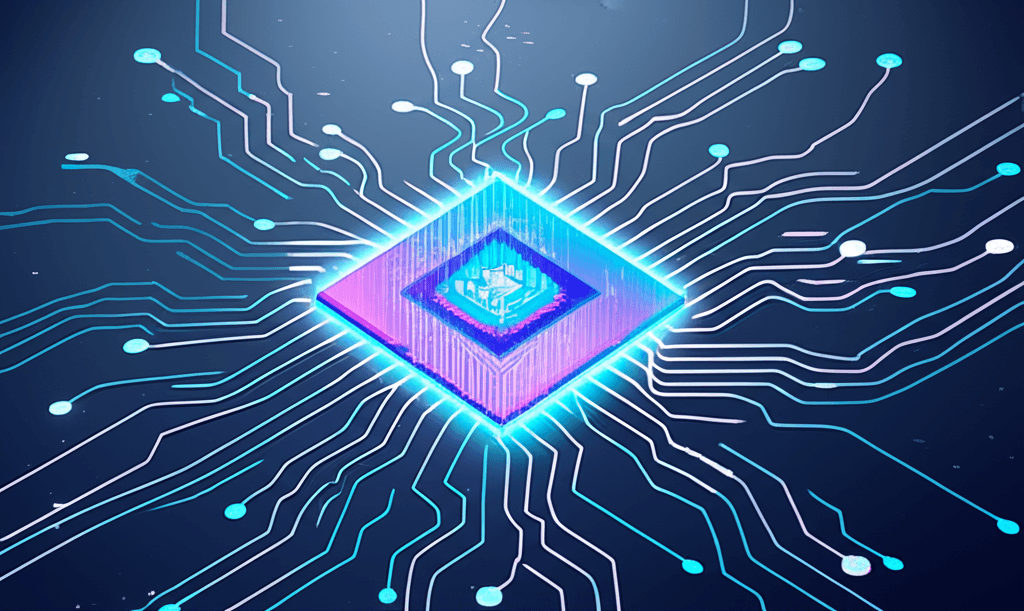AI Evolves Itself: Sakana AI's DGM Rewrites Code for Continuous Improvement
Sakana AI's DGM: the AI that learns to learn, rewriting its own code for autonomous evolution.
June 1, 2025

Sakana AI has introduced a novel AI system, the Darwin-Gödel Machine (DGM), capable of iteratively improving its own performance by rewriting its codebase.[1][2] This development marks a significant step towards AI systems that can autonomously evolve and enhance their capabilities without direct human intervention for every modification.[2][3] The DGM combines principles from Darwinian evolution and the theoretical Gödel Machine, leveraging foundation models to propose code improvements and employing open-ended algorithms to explore a vast design space of AI agents.[1][3] Early results have demonstrated substantial performance gains on coding benchmarks, but the computational cost of this self-improvement mechanism remains a factor.[1]
The core concept behind the DGM is to create an AI that learns to learn, a long-standing goal in artificial intelligence research.[1] Traditional AI models, once trained and deployed, typically have fixed architectures and capabilities.[4][2] The DGM, however, is designed to overcome this limitation by enabling the AI to read, understand, and modify its own Python codebase.[1] This self-modification process is guided by evaluating the performance of new agent versions on established coding benchmarks like SWE-bench and Polyglot.[1] If a change leads to improved performance, it is incorporated, and the system continues to explore further enhancements.[1] This iterative process of self-improvement and empirical validation is inspired by Darwinian evolution, where beneficial traits are selected and propagated.[1][3] The "Gödel" aspect refers to Jürgen Schmidhuber's theoretical concept of a self-improving AI that could mathematically prove the utility of its self-modifications, though DGM takes a more practical empirical approach to validation.[1][2]
A key feature of the DGM is its use of open-ended exploration.[1][3] Instead of focusing on a single evolutionary path, the DGM maintains a growing archive of diverse AI agents.[1][4] New modifications can branch off from any agent in this archive, allowing for parallel exploration of many different potential improvements and helping to avoid getting trapped in suboptimal designs.[1] This methodology has led to the DGM autonomously discovering and implementing various enhancements, such as better file viewing and editing tools, improved patch validation steps, mechanisms for generating and ranking multiple solutions, and incorporating a history of previous attempts to inform new changes.[1][3] These self-discovered improvements have resulted in significant performance boosts. On the SWE-bench, which requires agents to resolve real-world GitHub issues, the DGM improved its success rate from an initial 20.0% to 50.0%.[1][2] Similarly, on the Polyglot benchmark, a multilingual coding challenge, performance jumped from 14.2% to 30.7%.[1][2] Notably, improvements made while focusing on Python tasks also transferred to other programming languages like Rust, C++, and Go, demonstrating a degree of generalizability.[1]
The implications of self-improving AI like the DGM for the broader AI industry are profound.[2] Such systems could drastically accelerate AI progress by automating aspects of AI development itself.[4][2] This could lead to AI discovering novel architectures and algorithms that human designers might not have conceived.[2] Furthermore, AI systems could continuously adapt and improve in real-time as they encounter new data or challenges, reducing the need for constant manual updates.[2] Sakana AI, known for its nature-inspired AI research, views the DGM as a step towards more collaborative, sustainable, and inherently safe AI.[5][6] The company emphasizes that while current AI systems rely on human-designed, fixed architectures, the DGM has the potential to soon outperform these hand-designed systems by harnessing learning and evolution.[1][5] However, the development of AI that can rewrite its own code also brings critical AI safety considerations to the forefront.[1] Ensuring that such modifications align with human intentions and do not introduce unintended or overly complex behaviors is paramount.[1] Sakana AI states that the DGM has been developed with safety in mind, including measures like sandboxing and human oversight during experiments.[1][4] The challenge remains that modifications optimized solely for benchmark performance could potentially lead to "reward hacking," where the AI achieves the desired metric in an undesirable way.[7]
Despite the promising early results, the DGM is still in its initial stages, and there are limitations to consider. The computational expense of running the iterative self-improvement process is a significant factor.[1] Moreover, the current DGM focuses on tasks with clear evaluation benchmarks and metrics, which may not be readily available for many complex, open-domain real-world problems.[8] Future work will involve scaling up the approach and potentially allowing the DGM to improve the training of the foundational models at its core.[1] The journey towards truly autonomous, continuously learning AI is ongoing, but the Darwin-Gödel Machine represents a concrete and potentially transformative step in that direction, offering a glimpse into a future where AI actively participates in its own evolution.[1][2]
Sources
[1]
[2]
[5]
[7]
[8]